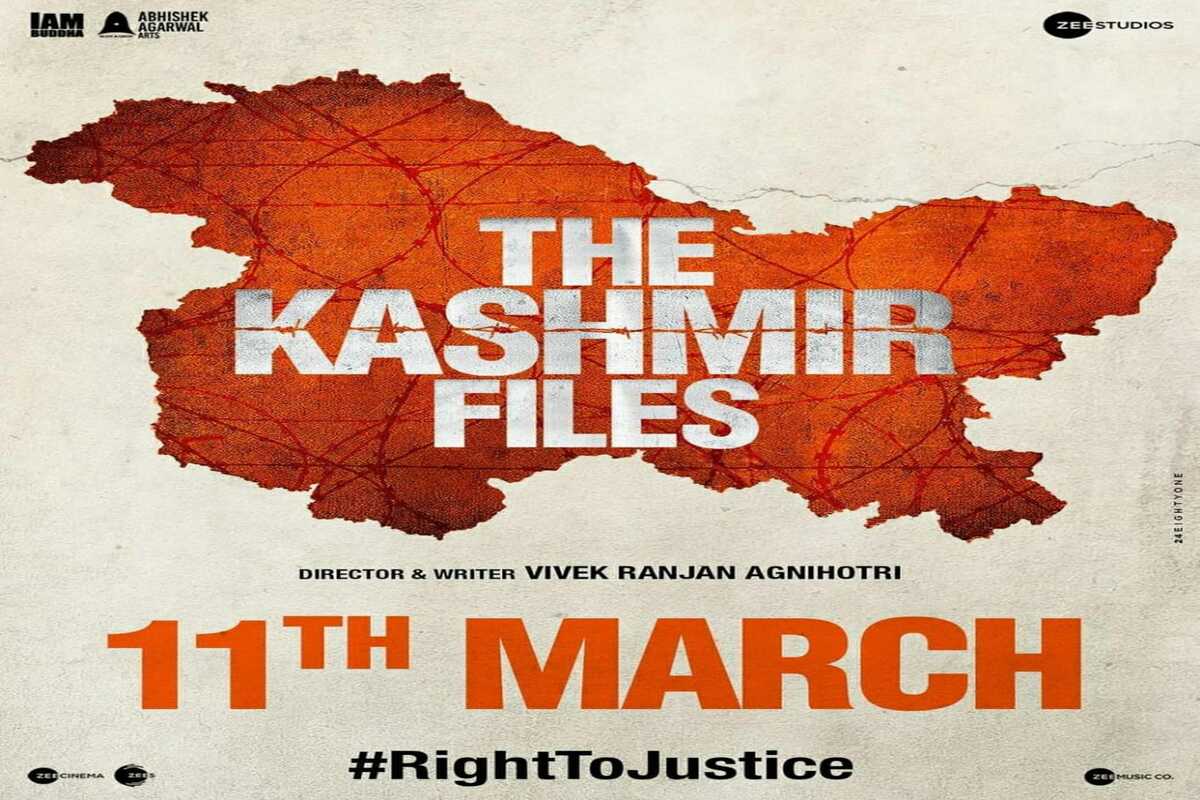Every vote matters, says Kangana Ranaut
Amid the clash of heritage and stardom, the sprawling constituency, one of the toughest and covering almost two-thirds of the state, braces for a riveting electoral spectacle.
Agnihotri and his team are truly appreciable for doing extensive research. While the first half establishes the background, the second half is about how and why today’s younger generation can and should connect with their past.

Kashmiri Pandit shot, injured by militants in J&K's Shopian(Image source: Instagram @anupamkher)
The sensitive subjects always demand a good narration full of sense. Many filmmakers usually take a safer, sometimes indecisive route to depict unfortunate real-life incidents.
However, director Vivek Agnihotri seems not wasting even 1 sec and going straight for more impact in ‘The Kashmir files’, which revolves around the exodus of Kashmiri Hindus from the valley in the early 1990s because of a rise in the Islamic militancy, and the effect that it has created on the group ever since. Right from the first scene, the injustice that prevailed in the region is very sharply depicted.
The tragedy of Kashmir has deep roots. In 1989-1990, amid a rising insurgency, the demographically-disadvantaged Kashmiri Pandit community in the Valley came under threat. As violence and persecution rose, lakhs of them fled their homes to settle in refugee camps.
Advertisement
For over 30 years, they lived in exile, with successive governments doing little for their resettlement. Their cause is raised in political debates and is often left at that. And now another atrocity is visited upon them in the form of a Vivek Agnihotri film about the exodus.
Vivek’s last film, The Tashkent Files, was a conspiracy thriller, culled from vague literature paraded as ground-breaking truths. His latest, The Kashmir Files, opens with an acknowledgment: the film, we’re told, is based on video testimonies of actual Kashmiri Pandit victims.
Agnihotri weaves several real-life incidents together and narrates the story from the lens of Pushkar Nath Pandit (Anupam Kher), who himself is a victim of the exodus, and strives hard to get justice and stability not only for himself, but for his remaining grieving family, and for the community as a whole too.
Various other pivotal points are also touched through this movie such as the role of the media and the government at the time, the politics in the region, etc. for which you have to watch the movie.
Agnihotri and his team are truly appreciable for doing extensive research. While the first half establishes the background, the second half is about how and why today’s younger generation can and should connect with their past.
As for the performances, Anupam Kher, Mithun Chakraborty, Puneet Issar, Prakash Belawadi, Pallavi Joshi, Atul Srivastava, and Darshan Kumaar make it a compelling watch. Their performance is impactful, yet controlled. While all live up to their parts, Chakraborty’s performance in one confrontational sequence with Darshan is a memorable one. Rohith Sharma’s music and Swapnil Bandodkar’s lone lyric are outstanding.
The whole movie has been shot in Kashmir and staying true to the location helps add a lot more authenticity and feel to the narrative. The flow of the film is edited well, while the dialogues stay true to the region, and subtitles come in handy at times when you struggle to understand the language.
The film could continue to be a talking point due to effective synchronization of mythology, the ancient history of Kashmir, JNU’s internal politics, the diplomacy of media, the Indian Army, and the abrogation of Article 370.
With a unique storyline that blends in with contemporary intellectual set-ups in the capital and beyond, Agnihotri has given his hundred percent for making the film a masterpiece but somewhere some points still need to be more defined.
In the second half, it loses that connection with the viewer because the filmmaker attempts to highlight so many angles at once. Moreover, while one sees an attempt to create a balance on point of view in the narrative, it mostly comes across only by the end and seems largely missing in most parts of the story. Some might even describe a few of the scenes as ‘too graphic’, but it does enable the director to convey his message of ‘Right To Justice’.
You can watch the film in your nearest cinema hall.
Watch the trailer here:
Advertisement